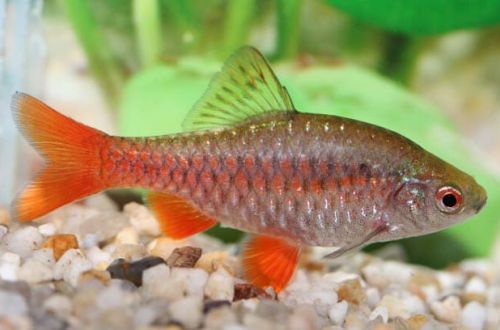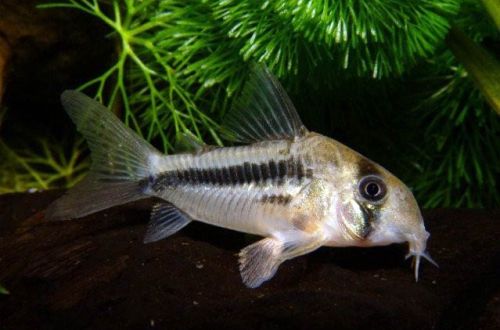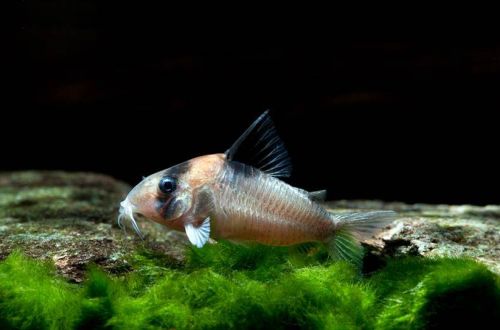
Barbus Manipur
Barbus Manipur, scientific name Pethia manipurensis, belongs to the family Cyprinidae (Cyprinidae). The fish is named after the Indian state of Manipur, where the only habitat of this species in the wild is Loktak Lake in the Keibul Lamzhao National Park.

Loktak Lake is the largest fresh water body in northeast India. It is actively used to obtain drinking water by local residents and at the same time is heavily polluted by both domestic and agricultural waste. For this reason, the wild populations of Barbus Manipur are endangered.
Contents
Description
Adult individuals reach a length of about 6 cm. With its red-orange coloring, it resembles the Odessa Barbus, but is distinguished by the presence of a black spot located on the front of the body behind the head.
Males look brighter and slimmer than females, have dark markings (specks) on the dorsal fin.
Behavior and Compatibility
Peaceful friendly mobile fish. Due to its unpretentiousness, it is able to live in various conditions of common aquariums, which significantly increases the number of compatible species.
Prefers to be in a group, so it is recommended to purchase a flock of 8-10 individuals. With fewer numbers (single or in pairs), Barbus Manipur becomes shy and will tend to hide.
Brief information:
- The volume of the aquarium is from 70–80 liters.
- Temperature – 18-25°C
- Value pH — 5.5–7.5
- Water hardness – 4–15 dGH
- Substrate type – any dark
- Lighting – subdued
- Brackish water – no
- Water movement – little or no
- The size of the fish is about 6 cm.
- Food – any food
- Temperament – peaceful
- Keeping in a group of 8-10 individuals
Maintenance and care, arrangement of the aquarium
Most of the fish of this species on sale are captive-bred and not wild-caught. From the aquarist’s point of view, generations of life in the built environment have had a positive effect on barbs, making them less demanding in terms of conditions. In particular, fish can successfully be in a fairly wide range of values of hydrochemical parameters.
The optimal size of the aquarium for a group of 8-10 fish starts from 70-80 liters. The design is arbitrary, but it was noted that under conditions of subdued lighting and the presence of a dark substrate, the color of the fish becomes brighter and more contrasting. When decorating, natural snags and thickets of plants, including floating ones, are welcome. The latter will become an additional means of shading.
The content is standard and includes the following procedures: weekly replacement of part of the water with fresh water, removal of accumulated organic waste and equipment maintenance.
Food
In nature, they feed on algae, detritus, small insects, worms, crustaceans and other zooplankton.
The home aquarium will accept most popular dry food in the form of flakes and pellets. A good addition would be live, frozen or fresh brine shrimp, bloodworms, daphnia, etc.
Breeding / breeding
Like most small cyprinids, Manipur Barbus spawns without laying, that is, it scatters eggs along the bottom, and does not show parental care. In favorable conditions, spawning occurs regularly. In the general aquarium, in the presence of thickets of plants, a certain number of fry will be able to reach maturity.





